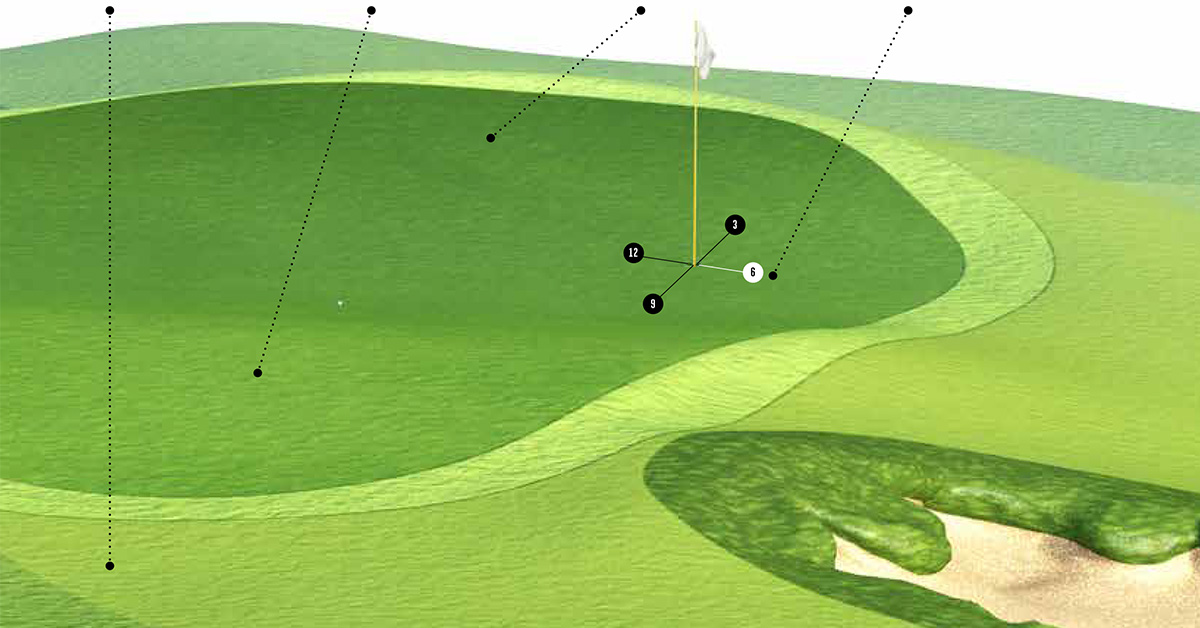Better putting starts with understanding where the ball is going to go.
My pre-putt routine is probably not unlike most out here on tour. I start behind the ball, trying to get a general feel for break and speed. I then go around to the other side of the hole, while constantly looking at the line from the side as I walk. After looking at the putt from behind the hole, I then walk around the other side, focusing more on the severity of the slope. Once I replace the ball, I take one more look and focus on an exact point left or right of the hole depending on the break. Finally, my focus goes to the cup to get a feel for the speed. After a practice stroke, I lock into the line I want to start the ball on with my eyes and hit the putt. Of course, it drops in the middle every time. Joking aside, reading most putts thoroughly is important if you want to lower your scores. Here are some things to look for as you read a green.
A heads-up approach
Start reading as you get closer to the green. Scan the whole thing, looking for general slopes. Even note the terrain around the green to help figure which part of it is highest. Imagine which way water would flow if you poured some on the green. The ball will always break in that direction. On this green, water would move towards the front on the lower tier and to the right on the top tier.
Speed is not uniform
Grain in bentgrass and Bermuda grass (think the blades) doesn’t follow the sun; it always grows downhill. Putts into the grain (dull appearance) are typically a little slower than downgrain (shiny). Also realise a putt might start uphill or downhill, downgrain or into the grain, but finish in the opposite condition. A putt from the front tier here will start uphill, but finish downhill, breaking right.
Listen to your feet
Your feet should be collecting data about the predominant break. If you’re favouring one foot over the other as you stand, you know that foot is a little downhill. Also pay attention to the firmness of the surface, but don’t assume harder greens are faster. A green that’s wilting might be slick, but speed is much more affected by the time of day. Greens get slower later in the day as the grass grows.
Check your six
Find the lowest spot around the hole in relation to your ball. Now think of a clockface. The lowest spot is the “6” on the face. Now picture the rest of the clockface. Balls in line with numbers 1 to 5 on the clockface and the cup will break left. Balls in line with numbers 11 to 7 will break right. If it’s on line with 12 or 6 and the hole, you’ve got a straight putt. In this case, it’s in line with 10, so you know it will break right.
Check the cup
You might notice that the grass around the lip of the hole is often crusty on one side and fairly pristine on the other. This often happens on bentgrass and Bermuda grass surfaces because of grain. If it’s crusty on one side, that side is lower (downgrain), and the putt will break in that direction.
Luke Donald led the US PGA Tour in the strokes gained/putting stat for three consecutive years. He spoke with Ron Kaspriske


